
The purpose of this study was to develop and validity Competitive State Anxiety Scale for Taekwondo Form athlete(CSATF). The participants were composed of the 48 Taekwondo Form athlete to explore sub-factors of Competitive State Anxiety for Taekwondo Form athlete. The data were collected by an open-ended questionnaire and interview. The participants were composed of 257 national Taekwondo Form athlete to develop Competitive State Anxiety Scale for Taekwondo Form athlete. This 157 athlete data were used for items analysis, reliability analysis and exploratory factor analysis. And 100 athlete data were utilized for confirmatory analysis. Also convergent validity, discriminant validity, predictive validity latent mean analysis of CSATF were performed The results of this study were as follows. Firstly, the results revealed that the four general dimensions were identified such as cognitive anxiety, somatic anxiety, state of confidence, environmental anxiety. Secondly, CSATF comprised cognitive anxiety(5 item), somatic anxiety(5 item), state of confidence(5 item) and environmental anxiety(6 item). Thirdly, convergent validity, discriminant validity and predictive validity, the multi-group analysis according to gender examined validity of CSATF.


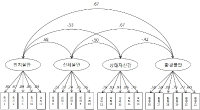
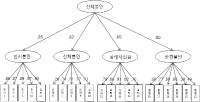
Purpose The purpose of this study was to develop a Korean Life Skills Scale for Sports (KLSSS) that original version is the LSSS developed by Cronin and Allen (2017). Methods The subjects were 899 middle school and high school students. The measurement tool was used with LSSS. The validation of KLSSS followed a three-stage of validation procedure; substantive stage, structural stage, and external stage. The result is as follows. Results First, In the substantive stage, KLSSS consisted of 47 items with 8 factors. As a result of the item clarity test, it was confirmed that all the items were appropriate. Second, in the structural stage, KLSSS was explored and confirmed as 5 factors and 18 items. Third, in the external stage, KLSSS showed discrimination and convergent validity. Conclusions KLSSS is composed of 5 factors and 18 items. The factors are teamwork (TW), goal setting (GS), time management (TM), social skills (SS), and leadership (LD). This scale can be used to obtain information on life skills in school physical education or sports.

Researchers and teachers in physical education have emphasized sportsmenship in sport education setting. However, how to teach sportsmenship in physical education is not proposed yet. The purpose of this study was (1) to develop an instructional program for teaching and learning sportsmanship and (2) to examine its effects on sportsmenship. Participants were 7th middle school students(N=95). Data were collected using Sportsmanship Test(Park, 2014), open-ended questionnaire and in-depth interviews with students. The data were analyzed through paired samples t-test and qualitative content analysis. Results showed that significant difference was observed in students' sportsmanship test scores after instruction. Analysis of interview data showed that students experience the value of utmost effort, respect for opponents, respect for teammates, acknowledging results, respect for judgment, and valuable lessons related to character education. Implications for sportsmanship education using instructional program were discussed.



PURPOSE This study aimed to develop a team building program for a middle school soccer team in order to verify its effects. METHODS A total of 50 middle school soccer players participated in the needs analysis, and 10 middle school soccer players participated the preliminary program. In addition, a total of 37 ‘S’ middle school soccer players and 2 coaches participated the final team building program to identify its effects. The team building program was developed through the following sequence: program goal setting, organization of program activities, and the pretest. Three types of questionnaires and a self-report were utilized to verify the effects of the team building program. RESULTS The team building program was developed based on interpersonal relationships, goal setting, and communication. The level of team cohesion, team communication, and coach-athletes interaction significantly increased through this program. Furthermore, the effects of stress relief and self-improvement were revealed through the self-report. CONCLUSIONS The team building program was determined to be effective and has various benefits. It is expected to contribute to the growth of middle school soccer players if coaches actively participate in the program with their athletes.
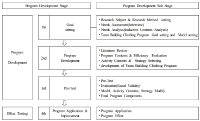
The purpose of this study was to examine the effects of team building climbing program on happiness, social development, self-esteem, stress, and depression of the youth. The participants consisted of 27 university students. The self-report instruments were compose of happiness scale, social development inventory, self-esteem scale, stress inventory, and depression scale. Qualitative data were participants’ perception about the effects of team building climbing program. Firstly, team building climbing program had positive effect on happiness of the youth, while climbing program had not significant effect on happiness of the youth. Secondly, both team building climbing program and climbing program had positive effect on social development of the youth, while team building climbing program was significant higher than climbing program in post-time. Thirdly, team building climbing program had positive effect on stress of the youth, while climbing program had not significant effect on stress of the youth. Fourthly, both team building climbing program and climbing program had positive effect on self esteem of the youth, while there were not significant between team building climbing program and climbing program in self esteem of post-time. Fifthly, both team building climbing program and climbing program had positive effect on depression of the youth, while there were not significant between team building climbing program and climbing program in depression of post-time. Limitations of this study and future implications were discussed.

PURPOSE This study aimed to develop a positive psychological intervention program for a college ice hockey team and test its effects based on application to the team. METHODS The demands of 78 college ice hockey players were asked through open questionnaires. Collected results underwent integrated analysis to develop the desired program through the participants who were also observers of the team. The objectives of the program were established, and an appropriate program was developed based on the analyzed data, expert opinion, and precedent research. The developed program was applied to 26 players of a college ice hockey team to verify its effects. Tasks included writing experience reports and in-depth interviews. The Happiness Measures 1, Strength Knowledge, and Team Interaction Questionnaires were also administered. Collected qualitative data were categorized to follow inductive analysis procedures, while paired t-tests were performed for quantitative data using SPSS 25.0. RESULTS To improve the application of the program in real situations and maintain credibility and validity, the program was developed based on analyses of individual and team demands, methods of the participant as an observer, expert opinion, and other considerations. Statistically meaningful differences in positive psychological mind, happiness, recognition and utilization of strengths, team interactions, team cohesion, and so on were found using paired t-tests comparing data before and after the developed positive psychological intervention program. CONCLUSIONS Providing opportunities to recognize individual and team strengths and have valuable experiences for each player could enhance interactions between teammates and create a favorable team environment.
The purpose of this study was to examine the effects of happiness improvement program on psychological variables which were happiness feeling, self-esteem, interpersonal relationship, internal-external locus of control, stress, coping, perceived performance and physiological variables such as cortisol and serotonin of collegiate badminton players. The participants consisted of 10 collegiate badminton players. Happiness improvement program for collegiate badminton players was developed by previous literatures, in-depth-interview, psychological test data, and consultation of happiness improvement experts. The happiness improvement program consisted of 12 intervention program: orientation, rapport development and the understanding happiness, self-esteem enhancement techniques, interpersonal relationship strategies, stress and coping management, peak performance methods, and action plan of happiness improvement program. Each program was applied to participants in about 90-120 minute a session(2-3 times session a week). The instruments of this study were made up of three broad categories: (a) psychological data, b) physiological data, and (c) qualitative data. Firstly, happiness improvement program significantly increased happiness feeling, self-esteem, internal-external locus of control, interpersonal relationship capability, coping skills of collegiate badminton players. Secondly, happiness improvement program significantly decreased stress of collegiate badminton players. Thirdly, participants positively perceived the effects of happiness improvement program on psycho-physiological variables. The limitations of this study and future implications were discussed.
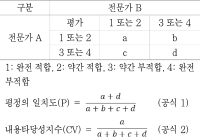
Purpose Common content knowledge(CCK) is composed of rules, techniques, and tactics. Such knowledge is a requirement for effective teaching of physical education (PE). There are, however, few validated tests of CCK. Thus, the purpose of this study was to develop a CCK test of soccer and evaluate the validity and reliability of the test using Rasch modeling (Rasch, 1980). Methods We developed thirty item common content knowledge test for soccer. Then, we used Rasch modeling to evaluate the validity and reliability of a test of soccer. Pre-service teachers (N=92) majoring in physical education and non-PE major (N=111) participated in this study. Results Thirty questions demonstrated good item-model fit. Moderately high internal consistency for person-ability and high internal consistency for item-difficulty are reported. Both Infit and Outfit statistics showed a good fit between the data and the Rasch model. Conclusions The analysis provides evidence to support the validity and reliability of this instrument as a CCK test of soccer. Limitations of the study were discussed and suggestions were provided to improve the test.

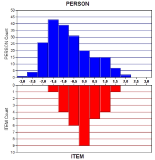

This study was designed to develop a communication training program for college ice hockey teams and examine the effects of this program. College ice hockey players and coaches participated in this study. The various types of data were collected and analyzed to assess the needs of the program and to develop the program with expert meetings. To analyze the effects of the developed program, questionnaires, experience reports, and in-depth interviews were conducted as measures. The results of this study are as follows. First, ice hockey team communication consisted of eight factors (i.e., sympathy, respect, trust, two-way verbal communication, firm expression of opinion, training program communication, developing rapport, and cohesion). Thus, the program developed based on eight factors and consisted of three stages of total 12 sessions which was 90 min to 100 min long. Second, this program increased communication satisfaction, coach-athlete interaction, group cohesion and exercise effectiveness, and these quantitative results were statistically significant. Moreover, qualitative analysis revealed that this program enhanced sympathy, social cohesion, and task cohesion among participants as well as positively changed their communication skills better than before. The communication training program which was developed through this study could provide basic information of a communication training program in the sports domain and positively influence overall sports team effectiveness and performance.


Purpose This study was designed to develop a team building program that helps freshmen student-athletes to adapt to college life and enhance team function and process and to examine the effects of this program. It could provide basic information of a team building program that effectively accelerates team function in the college team sports domain. Methods The program was developed through this process. First, an open-ended questionnaire was utilized to discover the needs of the program. Second, the results of needs of the program and important factors of team-building program were taken into consideration. Third, expert meetings were conducted. Consequently, the program consisted of three stages of total 10 sessions which was 90 min long. The questionnaires(Group Cohesion Questionnaire and Coach-Athlete Relationship Questionnaire), experience report, and program evaluation form were used as measures to identify the effects of the developed program. SPSS version 24.0 and inductive analysis were used to analyze the data. Results The results of this study are as follows. First, there was no statistically significant influence between developed program and the level of group cohesion. In contrast, the level of coach-athlete interaction was significantly increased. Second, the analysis of experience report revealed that this program reduced interpersonal conflict between team members and formed positive interpersonal relationship by mind of respect and consideration. Conclusion In conclusion, the hierarchical culture was strongly formed and team member suffered from the dual role of athlete and student in Korean college team sports. Thus, these should be resolved in order to enhance team function and process. As a results, this process could increase team performance as well as offer psychological stability to college student-athletes.
